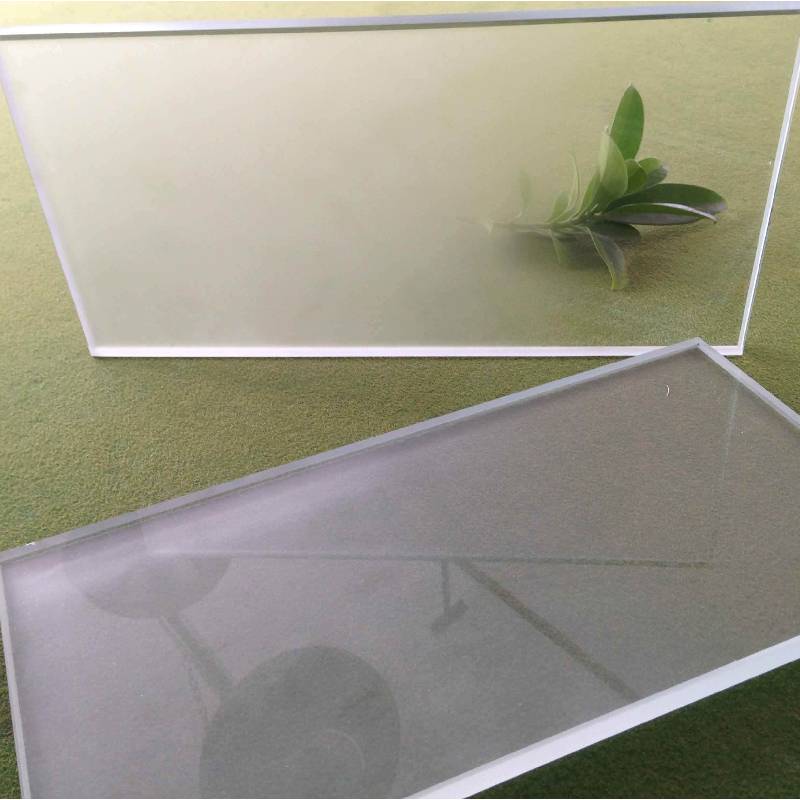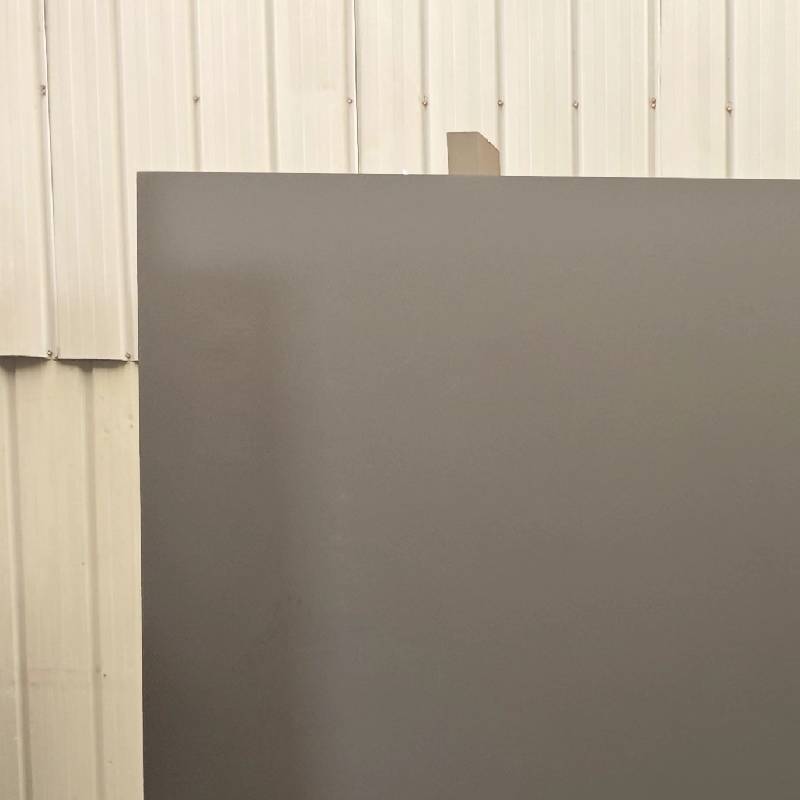

In the world of modern architecture and interior design, materials are chosen not just for their function, but for their ability to evoke emotion and create atmosphere. Among these, acid etched glass stands out as a premier choice, offering a unique combination of ethereal beauty, practical privacy, and enduring performance. This guide provides an in-depth exploration of this versatile material, covering everything from industry trends and technical specifications to manufacturing processes and real-world applications.
The global decorative glass market, valued at approximately USD 22.5 billion in 2023, is projected to grow at a CAGR of 4.5% from 2024 to 2030. This growth is significantly driven by the increasing demand for sophisticated and functional materials in both commercial and residential construction. Acid etched glass is at the forefront of this trend. Its ability to diffuse light softly, create privacy without sacrificing brightness, and offer a premium, fingerprint-resistant finish makes it a preferred alternative to traditional sandblasted glass or temporary film applications. The move towards open-plan offices and minimalist home interiors has further boosted the demand for acid etched glass panels as elegant solutions for partitioning space.
The coveted smooth, translucent finish of acid etched glass is not a coating or a laminate; it is an integral part of the glass itself. The process is a masterpiece of controlled chemical reaction, ensuring a consistent and durable surface that won't chip, scratch, or peel over time. At TPTOPGLASS, we adhere to strict ISO 9001 quality management standards throughout our manufacturing cycle.
Process begins with selecting premium, defect-free float glass. Low-iron glass is often chosen for its ultra-clear substrate, ensuring a pure, white frosted appearance.
The glass is thoroughly cleaned and dried to remove any impurities, ensuring a uniform reaction with the acid.
The glass surface is exposed to an aqueous solution of hydrofluoric acid (HF) and other chemical agents under controlled conditions (time, temperature, concentration).
After the desired level of etching is achieved, the glass is immediately rinsed and neutralized to halt the chemical reaction, ensuring safety and stability.
Each panel undergoes rigorous inspection for uniformity of finish, haze, gloss, and any surface imperfections, complying with ANSI Z97.1 standards for safety applications.
This chemical process microscopically roughens the glass surface, scattering light as it passes through. Unlike the mechanical process of sandblasting which creates a rougher, more porous surface prone to staining, acid etching results in a silky-smooth, non-porous finish that is easy to maintain and remarkably durable, with a service life equal to that of the glass itself.
Understanding the technical parameters of acid etched glass is crucial for architects, designers, and fabricators. These metrics define the material's performance in terms of light, privacy, and strength. The table below presents typical specifications for products available from TPTOPGLASS.
| Parameter | Standard Acid Etched Glass | Low-Iron Acid Etched Glass | Anti-Glare Acid Etched Glass | Double-Sided Acid Etched |
|---|---|---|---|---|
| Substrate | Clear Float Glass | Low-Iron Float Glass | Clear or Low-Iron | Clear or Low-Iron |
| Thickness Range | 3mm - 19mm (1/8" - 3/4") | 4mm - 12mm (5/32" - 1/2") | 2mm - 6mm | 5mm - 12mm |
| Max Size | 2440 x 3660 mm | 2440 x 3660 mm | 1830 x 2440 mm | 2440 x 3660 mm |
| Visible Light Transmittance (VLT) | ~75-90% (Varies with thickness) | ~80-92% (Higher clarity) | ~88-91% | ~70-85% |
| Haze Level | 70-95% (Standard) | 70-95% (Standard) | 5-60% (Lower for displays) | 90-98% (Maximum privacy) |
| Gloss (at 60°) | 20-40 GU | 20-40 GU | 70-120 GU (Application specific) | 20-40 GU |
| Processing Options | Tempering, Laminating, Drilling, Edging | Tempering, Laminating, Drilling, Edging | Tempering (often used in electronics) | Tempering, Laminating, Drilling, Edging |

Visual data helps clarify the advantages of acid etched glass over alternatives. Below are charts that illustrate its market position and key performance comparisons.
The bar chart clearly shows the superior durability of acid etched glass. Because the finish is integral to the glass, it cannot be scratched off or damaged like a surface film, and it's far less susceptible to fingerprints and stains than porous sandblasted glass. The pie chart highlights its versatility, with interior partitions being the dominant application, a testament to its ability to create bright, private, and modern spaces.
The unique properties of acid etched glass lend it to a vast array of applications across multiple industries, from architecture to consumer electronics.

Choosing a supplier for a critical design element like acid etched glass is about more than just the product; it's about partnership, reliability, and expertise. TPTOPGLASS distinguishes itself from other manufacturers through a commitment to quality, customization, and customer service.
| Feature | TPTOPGLASS | Generic Competitors |
|---|---|---|
| Quality Control | Strict adherence to ISO 9001. Multi-point inspection for haze, gloss, and defects. | Variable standards, often less rigorous inspection. |
| Customization | Full range of custom sizes, thicknesses, patterns, and double-sided etching. | Limited to standard stock sizes and finishes. |
| Technical Expertise | Over 15 years of dedicated experience. In-house experts for consultation. | Often resellers with limited technical product knowledge. |
| Lead Time | Streamlined production for reliable delivery schedules (Typical: 2-4 weeks). | Inconsistent, longer lead times for custom orders. |
| Customer Support | Dedicated project managers and post-sale support. | Standard customer service, limited technical assistance. |
We believe that glass should not be a limitation, but a canvas for your design. Our customization capabilities for acid etched glass are extensive:
A leading tech firm was renovating its headquarters. Their goal was to foster a collaborative, open environment while providing distinct, private zones for focused work and meetings. They needed a material that was modern, low-maintenance, and aligned with their sleek brand aesthetic. They initially considered glass with applied frosted film, but were concerned about durability, peeling, and the "temporary" look.
Our team consulted with their architects and proposed a comprehensive solution using our acid etched glass panels.
The client was thrilled with the result. The acid etched glass perfectly balanced light and privacy, creating a dynamic and functional workspace. The permanent, high-quality finish elevated the interior design, and the facilities team praised its ease of cleaning compared to other materials. This project showcases how the strategic use of acid etched glass can fundamentally transform a space.
The keyword "acid etching glass at home" suggests a growing interest in DIY methods. We strongly advise against this. The process involves hydrofluoric acid, an extremely hazardous and corrosive chemical that can cause severe burns to the skin and eyes, and its fumes can damage the respiratory system. Professional manufacturing occurs in a highly controlled industrial environment with specialized equipment, ventilation, and personal protective equipment (PPE). For a safe, uniform, and high-quality result, always rely on experienced manufacturers like TPTOPGLASS. The risks of DIY acid etching glass at home far outweigh any potential benefits.
1. What is the main difference between acid etched and sandblasted glass?
The key difference is the process and the resulting surface. Acid etching is a chemical process that dissolves a microscopic layer of glass, creating a very smooth, satin-like, non-porous surface. Sandblasting is a mechanical process that pits the surface with an abrasive material, resulting in a rougher, more porous finish that is more prone to showing fingerprints and stains.
2. Can acid etched toughened glass be cut or drilled after processing?
No. Like all toughened (tempered) glass, it cannot be cut, drilled, or edge-worked after the tempering process. All fabrication must be completed before the glass is heated and rapidly cooled to become toughened glass. We ensure all specifications are met before the final strengthening stage.
3. What are the standard thicknesses and sizes for acid etched glass panels?
Standard thicknesses range from 3mm to 19mm. The most common thicknesses for interior applications are 6mm, 8mm, 10mm, and 12mm. Standard sheet sizes are typically up to 2440mm x 3660mm (96" x 144"). However, at TPTOPGLASS, we specialize in custom sizes to meet specific project requirements.
4. How do I clean and maintain acid etched glass?
Maintenance is simple. Due to its smooth, non-porous surface, acid etched glass can be cleaned with a standard glass cleaner and a soft, lint-free cloth. Avoid using abrasive scouring pads or harsh, gritty cleaners. Its resistance to fingerprints is one of its primary maintenance advantages.
5. What are the unique benefits of acid etched laminated glass?
Acid etched laminated glass combines the beauty of the etched finish with the key benefits of lamination. These include:
Safety & Security: If the glass breaks, the pieces remain bonded to the interlayer, reducing the risk of injury.
Acoustic Insulation: The PVB or SGP interlayer dampens sound waves, making it ideal for office partitions and conference rooms.
UV Protection: It can block over 99% of harmful UV radiation, protecting interior furnishings from fading.
6. Does the acid etching process weaken the glass?
While the process removes a minuscule amount of the glass surface, modern etching techniques have a negligible effect on the glass's structural integrity for architectural purposes. Furthermore, when strength is a concern, the glass is always toughened (tempered) after etching, which increases its strength by up to 500% and makes it a certified safety glass compliant with standards like ANSI Z97.1 and EN 12150.
7. Can I get a sample of your acid etched mirror glass?
Absolutely. We encourage clients to request samples to experience the unique finish and quality firsthand. You can see how the muted, soft reflection of acid etched mirror glass can enhance your design. Please contact our sales team to request samples for your project.
In today's digital world, trust is paramount. TPTOPGLASS is built on a foundation of Expertise, Experience, Authoritativeness, and Trustworthiness.
Our team comprises industry veterans who possess deep knowledge of glass chemistry, physics, and fabrication technologies.
With over 15 years in the field and thousands of successful projects, we have the hands-on experience to tackle any challenge.
Our operations are ISO 9001 certified, and our safety glass products meet or exceed global standards like ANSI Z97.1 and CE EN 12150.
We offer transparent pricing, reliable delivery schedules, comprehensive warranties, and dedicated customer support from start to finish.
Ready to elevate your next project with the timeless elegance of acid etched glass? Our experts are here to help you select the perfect solution.